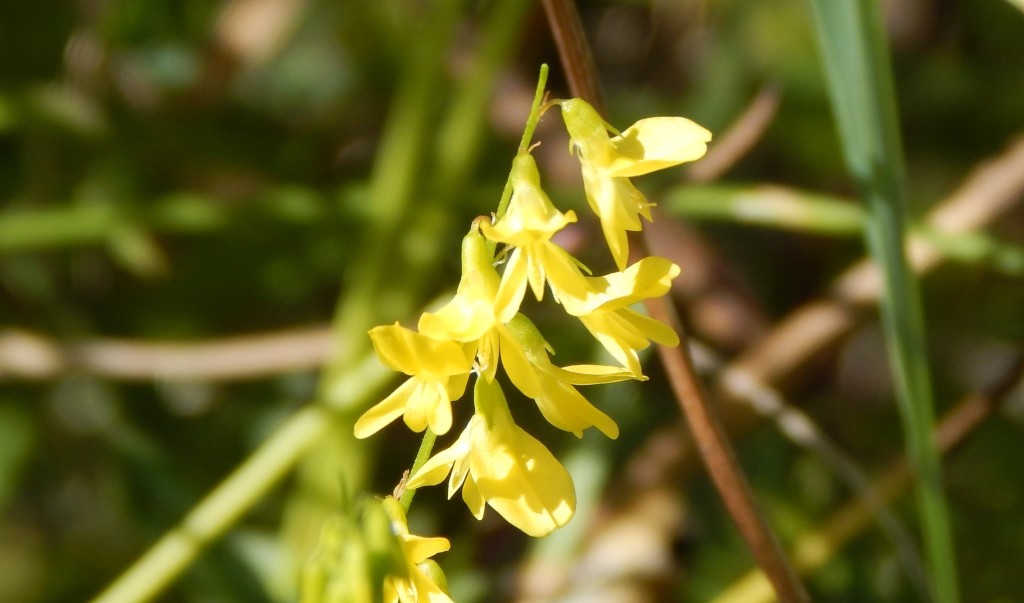
[227] Melilotus officinalis, Yellow Sweet Clover
Introduction
Melilotus officinalis, Yellow Sweet Clover, is a widespread wildflower. It has attractive but small bright yellow flowers.
It is also known as Sweet Yellow Clover or just Sweet Clover. Other names include Common Melilot, Yellow Melilot and Ribbed Melilot.
Other species of Melilotus may be called Sweet Clover or Melilot. Sweet Clover may be spelled as Sweetclover or Sweet-clover.
Taxonomy
Kingdom – Plants
Division – Vascular Plants
Class – Angiosperms (Flowering Plants)
Order – Fabales
Family – Fabaceae (Legumes)
Subfamily – Faboideae
Tribe – Trifolieae
Genus – Melilotus
Scientific Name – Melilotus officinalis
Name
Melilotus is in the Clover tribe, Trifolieae, and is named for its sweet smell. The Latin mel- means honey or sweetness and you will recognize -lotus from [214] Bird’s-foot Trefoil.
You will also have seen officinalis a few times, a species epithet used to mean common.
Description
Melilotus officinalis is an annual or biennial plant that grows to two metres in height, often in clumps.


Its leaves have three leaflets as for most clovers.
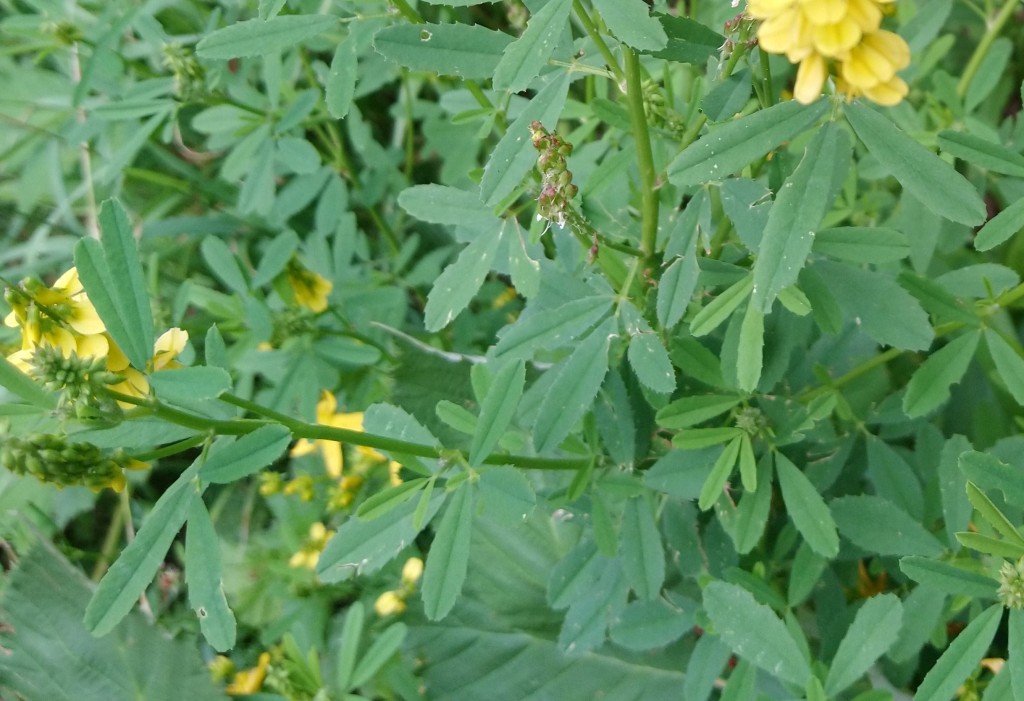


It produces spikes (racemes) of small, bright yellow flowers.


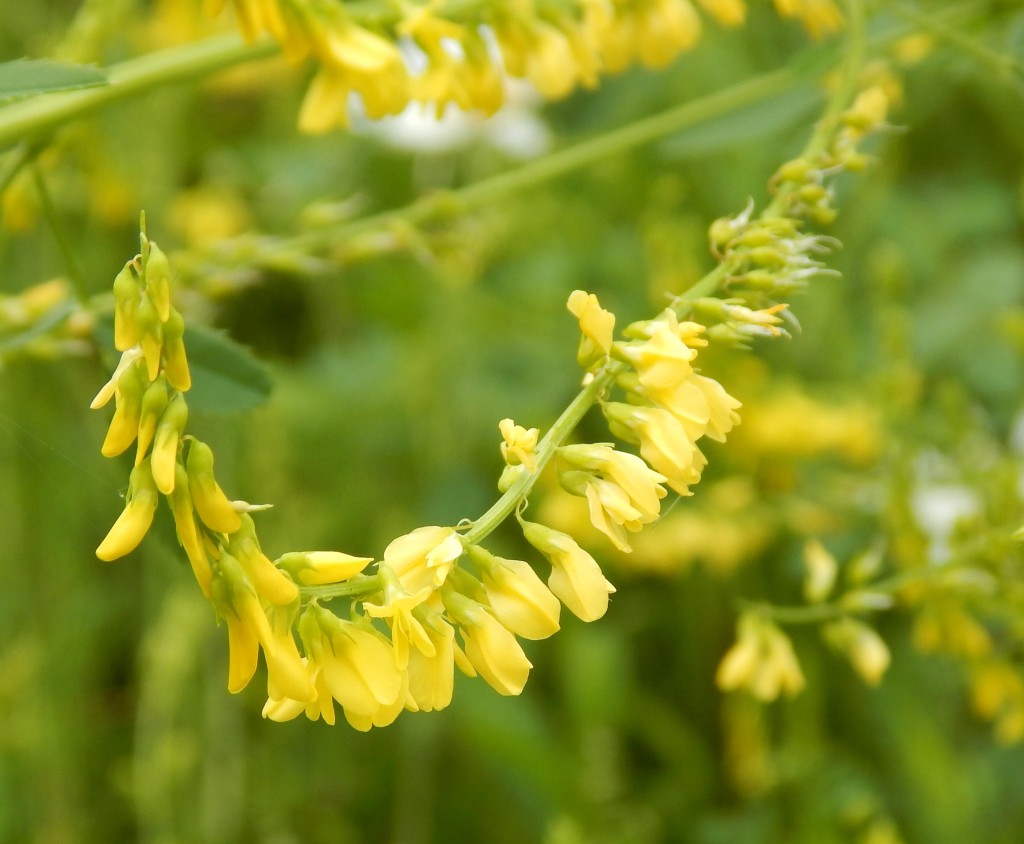
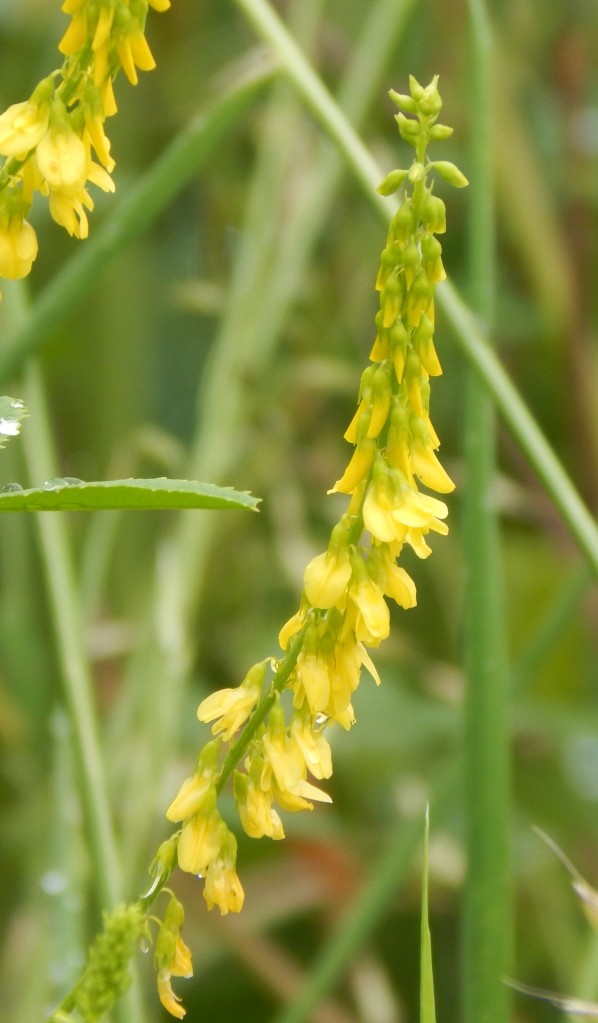


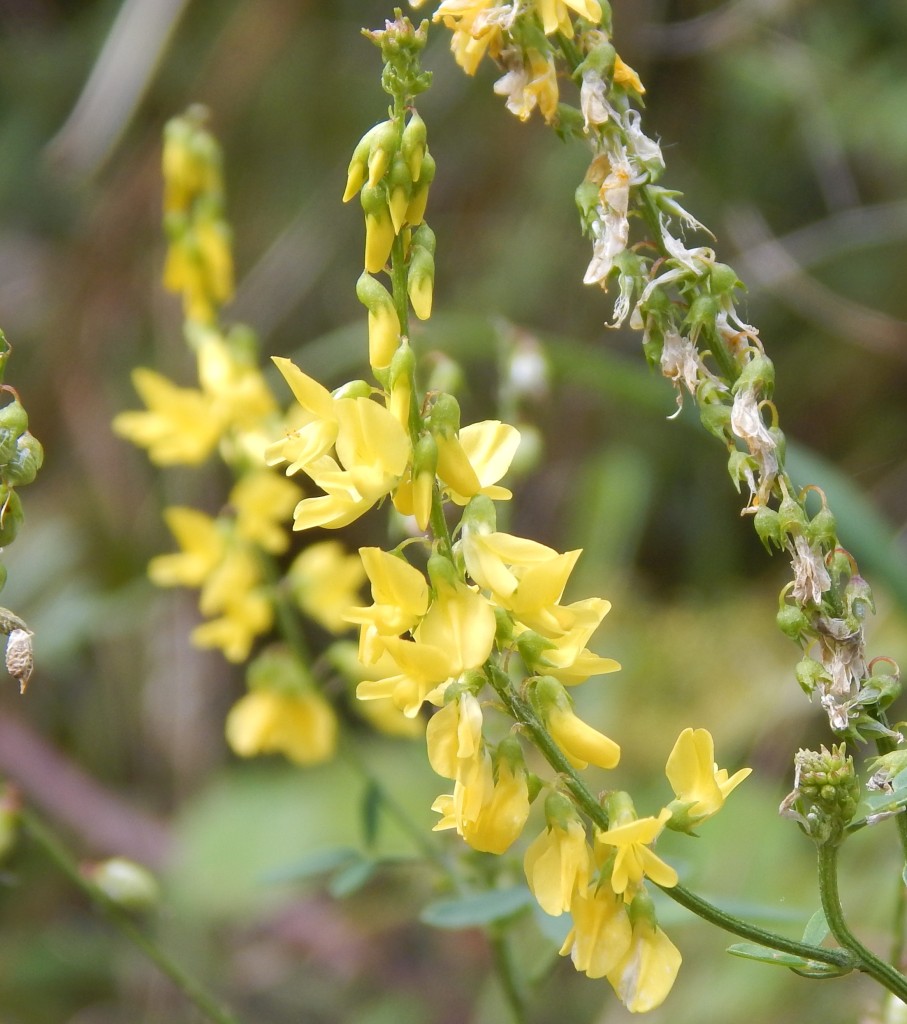
Habitat and use
Melilotus officinalis is native to Eurasia and has been introduced elsewhere, where it can become invasive.
It has been used as a typical legume for nitrogen fixation. (See [214] Bird’s-foot Trefoil.)
In North America it is used as a forage crop and it is also used as a green manure. (This means that it is allowed to grow and die in order to fertilize the land.) It has also been used for phytoremediation – to improve soil contaminated with toxic contaminants.
Cultivated varieties are available.
Other Notes
I have been lucky with a few species and this is one of them. Until the middle of June I was beginning to wonder whether I had enough pictures for a blog post. While I was looking out for it, I couldn’t remember where I had seen it or what it looked like.
Then I passed a clump about two metres wide and two metres tall. All of it was in flower!
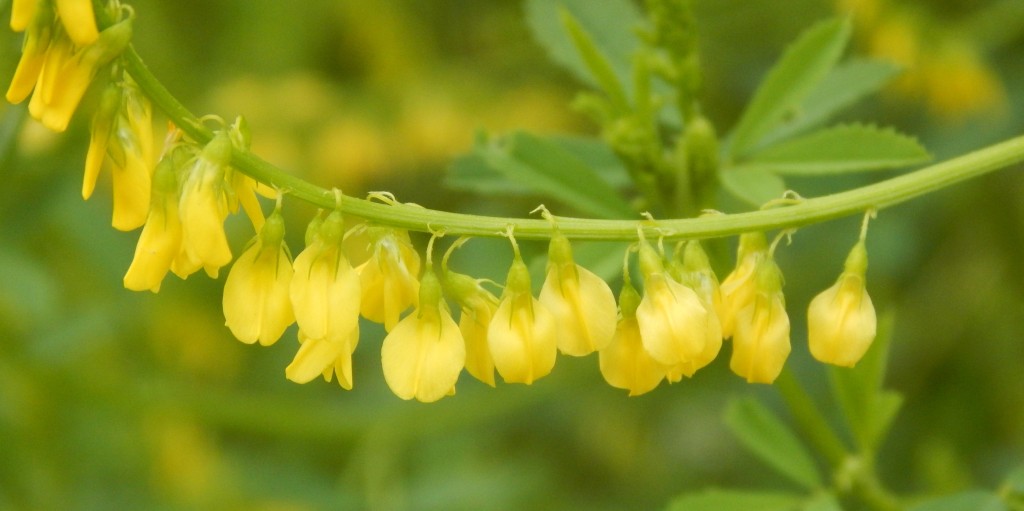
And, of course, over the next day or two I saw it again and again on my walks.
See also
[198] Sweet pea and Bird’s-foot Trefoil are related but not similar in appearance. The same is true for [343] Clovers, which I am sure you will recognize.
[210] Yellow Toadflax and [283] Yellow Corydalis are some more yellow wildflowers but not related.
